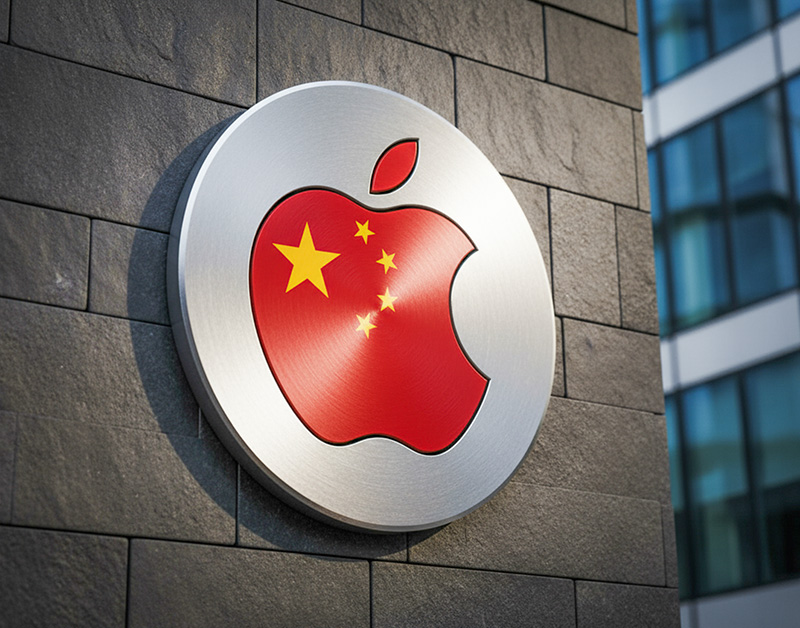BlackBerry Priv Review: Unripened Fruit
BlackBerry’s Priv is a compelling smartphone that isn’t quite ready for primetime

Something pretty wonderful happened during my time with BlackBerry’s newest smartphone. I told a friend that I was using a BlackBerry, to receive a familiar response.
“BlackBerry?” he queried. “I didn’t realize anyone used those any more.” I reached into my pocket and pulled out the thin, black, curved glass-toting Priv. “Oh wow,” he said. “It’s like an iPhone.” It isn’t, but when was the last time anyone had that kind of reaction to hardware from BlackBerry? Then, as he stared at the beautiful screen, I placed a thumb beneath it and pushed up, elegantly revealing a full QWERTY, backlit keyboard. “Whoa,” came the response.
In terms of design, the Priv has undoubtedly nailed one key factor in its existence: making BlackBerry relevant again. After years of chasing the business market, then trying to court consumers with BB10 — their in-house operating system — with a myriad of failed devices, that BlackBerry can still evoke any kind of reaction is miraculous. Even more so when it’s something akin to envy. Unfortunately, while the Priv dazzles on first viewing, it can induce “woah” and woe in equal measure.
Hardware

Let’s start with that wonderful exterior. It’s a mixture of glass, aluminum and rubberized plastic. The screen is curved — not as extremely as Samsung’s S6 Edge — and measures 5.4-inches. Resolution is Quad HD (2560 x 1440) and it’s plastic AMOLED, meaning it produces the blackest of blacks and vibrant, rich colors.
It’s surrounded by matte aluminum, a subtle break between the glass (tough Gorilla Glass 4) and the main body of the device. Here, you’ll find rubberized plastic in a “glass weave” pattern for added grip — unlike most of its competitors, the Priv won’t constantly try to escape your hands. There’s a speaker grille running beneath the display, while around back you’ll find an 18-megapixel Schneider Kreuznach-certified camera with dual tone flash. Inside, Qualcomm’s Snapdragon 808 nestles alongside 3GB of RAM, 32GB of storage (expandable with microSD) and a 3410 mAh battery.
Slide the screen up its buttery smooth, spring-loaded tracks and you’ll reveal the backlit keyboard. Its keys are flatter than those found on other BlackBerry phones, but they have the Passport’s touch-sensitive capabilities, doubling as a trackpad for selecting text, scrolling through webpages, or navigating the homescreen.
The phone’s overall aesthetic is superb (the Priv looks equally at home sitting on a conference table as it does next to a coffee at Starbucks), but the execution has some rough edges. Literally. The chrome buttons have sides that dig into fingers, while the screen and keyboard have sharp transitions unveiled when the display slides up the body.
Furthermore, the screen may be pixel-dense, perfect for YouTube or reading documents, but it’s almost unusable in strong sunlight — a tough situation for most devices yet something Samsung, Apple and even the Passport all nail. The speaker is reasonably loud and audio quality is pretty good, but the speaker grille is purely a design feature — audio comes from a single, mono speaker at the left hand side, which can’t match the Passport’s stereo blasters. Audio in general seems a little quiet — I can’t fault the quality through headphones, but found I had to keep the volume higher than on other devices. Call quality, though, as with all BlackBerrys, is excellent.
Software

BlackBerry’s first attempt at an Android phone employs a mostly stock version of Android 5.1.1 (an update to Marshmallow is promised in January) with BlackBerry’s various services sprinkled on top. Android needed work to match BlackBerry’s security standards, so they’ve taken several steps to make the Priv safer. The Linux kernel Android runs on has been patched, they’ve injected a unique key into each device that verifies the phone’s operating system, its bootloader remains locked down, and BlackBerry has baked in an app called DTEK, which purports to help improve device security. In reality, it does little more than offer suggestions. I started with a rating of “poor,” but by adding a pattern lock was suddenly considered “excellent.” Furthermore, it has no advanced knowledge of what you’re doing: set your password as “password” and it’ll still rate you as excellent. C’mon, BlackBerry.
DTEK can track things such as the number of times an app accesses your location (Snapchat is a major offender), but relies on the user to do anything about it, which nullifies the point. Android Marshmallow introduces the ability to choose what processes an app can access — DTEK tries to do the same on Lollipop, without the functionality. What’s more, there’s no fingerprint scanner. For a phone focused on privacy, that’s an odd misstep.
Instead, BlackBerry has brought over their picture password: pick a number from a grid and drag it to a set location on a picture. The location of the number will always change, so theoretically no one can look at your screen and determine your pattern from the smudges. Great in theory, but in reality it demands that you be pixel perfect in placing the number — and after 10 tries, the Priv will erase everything on the device. Don’t leave this phone around prankster friends.
Elsewhere, BlackBerry has brought over several features from BB10, such as their stellar contacts and calendar apps, device search (which searches everything on your phone, hence the name) and BBM. These all work as expected and will make the transition a little less painful for BlackBerry fans. Unfortunately, one of BB10’s killer features hasn’t fared so well in the migration to Android. BlackBerry Hub, which aggregates notifications into one customizable stream, is magnificent in BB10. In Android? I disabled it after three days.
Android already has a notifications system, so Hub isn’t particularly useful for that. As a messaging client, it’s rendered useless by a lack of OS-level integration — Facebook messages, tweets and texts will all open their corresponding apps. As an email client, Hub on the Priv handles Gmail archiving terribly — I can’t speak for other email services, so your mileage may vary. On the Passport, I created a folder to archive emails and it worked flawlessly. On the Priv, I couldn’t get it to work — and when I tried syncing the same folder that Gmail archives to, I received two copies of every email. Factor in that the app itself is sluggish, particularly when there’s a lot of content coming in, and I quickly tired of its existence. It’s a shame, as BlackBerry has a lot of decent ideas, but the execution is unfortunately sloppy. Luckily, most of BlackBerry’s additions can be disabled in settings. If you don’t like something, get rid of it. A great touch.
Other additions include a notifications tab, accessed by swiping in from that curved edge, which shows emails, calendar events, tasks and recent contacts. Swiping up from the home button shows more shortcuts — one is reserved for Google Now, the other two can be customized. There’s also a cute animation when charging, with a color-coded bar sliding its way along the bottom of the device and up the curved edge, showing how full the phone is at a glance. Friendly additions exist elsewhere, such as the familiar BB10 “splat” appearing on folders when an app has notifications waiting. Multitasking view can be customized between three options, each visually appealing. If you’re holding the phone in your hand, the screen won’t dim while you‘re looking at something. Double-tapping the screen will wake the device. All are nice touches from business-focused BlackBerry.
Unfortunately, the Hub’s sluggishness isn’t an isolated problem. The Priv’s processor is more than capable, but here it’s schizophrenic. Sometimes, it will scream through apps, other times it feels as though its getting bogged down — it will stutter, or pause, or get seriously warm. Google Maps and GPS are particularly worrisome — Maps can bring the entire phone to a standstill, while more than once the Priv would freeze at a specific location and refuse to update. And it’s not just Maps. Once, a simple GIF caused the phone to grind to a halt. This may be BlackBerry’s first Android device and they’ve done a commendable job in keeping it clean of bloat, but there are definitely bugs that need working through.
Battery

Those bugs also impact heavily on battery life. Eschewing the trend for extreme thinness that pervades many design studios, BlackBerry have kept a little heft to cram as much battery in as possible. Unfortunately, it’s only adequate. The Passport can run for two days, but the Priv can empty its battery by midday — far from the 22 hours BlackBerry claims. Google Maps can significantly drain the battery after just an hour of driving, for instance, and having to either charge the Priv during the day or activate battery saver mode is the rule, not the exception — unless you leave the Priv alone for 8 hours while at work.
Thankfully, it supports wireless charging and Qualcomm’s quick charge, letting you add several hours of juice in just 15 minutes. Unfortunately, BlackBerry didn’t include a fast charger in the box. That’s remarkably stingy, given the price.
Keyboard
Thankfully, the typing experience doesn’t underwhelm. If anyone is expecting the Passport’s keyboard, they’ll be disappointed — the Priv’s keys are shallower, flatter and more compact. However, they have that familiar clickiness that makes using a BlackBerry so tactile and touch sensitivity works flawlessly. Swipe up underneath an autocorrect suggestion to accept it, swipe left to delete a whole word, double tap to move the cursor around text — all excellent. Those with larger hands will take time to adjust, but within a couple of days I was up to a comfortable speed. Sure, I’m faster on the Passport, but the Priv passes the ultimate test: I can touch type while walking, without looking at the screen. That speaks volumes for what BlackBerry has accomplished here and it makes getting work done on the go a joy.

What’s more, it’s backed by a reasonably stellar on-screen experience. BlackBerry have brought over the software keyboard from BB10, which displays word suggestions above individual letters — flick up on the letter to send the word into wherever you’re typing. It’s definitely slower than Google’s keyboard (my defacto Android option) if you rely on suggested words, but if you use its highly capable autocorrect it’s much faster — a few bizarre corrections notwithstanding (no, BlackBerry, I don’t need to correct “worst” to “wort”). The beauty of Android, though: if you don’t like it, swap it out for Google’s option, or SwiftKey’s, or any other.
Camera
With the camera, BlackBerry made familiar claims about it being the best they’ve ever put in a phone. That’s a low bar, given how awful some of the company’s cameras have been. The Priv’s optically-stabilized, 18-megapixel, dual-LED flash is mercifully a solid effort. Initially, it was slow to take photos and the results were unimpressive, but an app update improved things dramatically. No, it can’t rival the iPhone 6S or Samsung’s latest for speed and clarity, but unless you’re planning to frame every shot you take it will be fine. In daylight, shots are clear and balanced, with nice colors and good contrast. Noise is relatively low, although busy scenes can get messy thanks to heavy-handed processing. As light falls, the Priv can stumble, introducing noise and struggling with differences in lighting, though its dual-tone LED flash helps. It does, however, take a notably long time in some situations — up to a second, which isn’t a dealbreaker, but could be for those who regularly shoot children, pets or other fast-moving scenes.
Manually activate HDR mode, though, and the Priv can be genuinely astonishing. In auto mode, it seems reluctant to use HDR — understandable, as details are notably softer when zoomed in — but it can produce some stunning results. A photo of the Smithsonian Castle, shrouded in shadows thanks to a setting sun, became bright, clear and detailed through the Priv.
Panorama mode is jerky in use, but the results are incredible, as the Priv can output 140 megapixel stitched images. I often thought the slow software had ruined the image, but after processing the Priv would display an impeccably rendered scene. Video, too, is stellar — audio capture is balanced and the Priv can shoot up to 4K — though there’s no slow motion option.
The app itself isn’t perfect, with a couple of crashes and occasionally slow loading times. More than once I’d take a photo, then wait for up to ten seconds for the Priv to produce it in the gallery. The hideous 2-megapixel front shooter also has no place in a phone of this caliber. Daylight shots are fine, but anything else produces grainy, unusable photos and bizarre colors. Selfie addicts need not apply.
I’ve included a gallery of photos captured by the Priv — click to open the images. They’re edited only for size, otherwise they’re taken straight from the phone.
Price
Unfortunately, the Priv undoes most of its good work on price. It’s $699 unlocked. The iPhone 6S Plus, one of only a few smartphones more expensive, starts at $749. Meanwhile, for $499, you can get Google’s Nexus 6P, one of the best Android phones out there, and you’ll enjoy a better camera and internals, and the freshest version of Android. If you need a phone for business, Apple has made huge inroads with the iPhone and Samsung’s Knox software — which uses BlackBerry technology — makes their smartphones serious contenders. If you need a physical keyboard, well, the Priv is really one of your only options, other than BlackBerry’s BB10 devices.
While several retailers are offering the Priv without contract, if you want a subsidized plan your only option is AT&T, who have the Priv on two-year plans for $249. Also, unlocked models will only work with GSM networks — there’s no Verison or Sprint-compatible models yet. Verizon promises their version of the Priv “soon.”
Conclusion
The Priv certainly promised a lot. Android would fix the app gap — yes, you can finally use Snapchat on a BlackBerry device. The camera would be one of the best out there. It would have powerful internals and great battery life. It would give the proper BlackBerry experience without sacrificing form factor.
In reality, it’s a little more complicated. It’s a beautiful device, a phenomenal way for BlackBerry to reintroduce itself to people, and using the Priv is an experience filled with little joys — sliding the screen (yes, you can answer calls this way and you’ll feel incredibly cool), editing documents with ease, watching the battery gauge creep up the side of the device. But it’s also one of frustrations, such as DTEK’s uselessness, or BlackBerry Hub’s uselessness, or Google Maps’ uselessness. My $700 phone shouldn’t be grinding to a halt just because I’m streaming Spotify while trying to find my way to the nearest mall.
The Priv will get better with updates and a price drop, but buyers shouldn’t be penalized because BlackBerry took so long to use Android. A phone shouldn’t demand that we wait for it to meet its full potential.
Support Metro Weekly’s Journalism
These are challenging times for news organizations. And yet it’s crucial we stay active and provide vital resources and information to both our local readers and the world. So won’t you please take a moment and consider supporting Metro Weekly with a membership? For as little as $5 a month, you can help ensure Metro Weekly magazine and MetroWeekly.com remain free, viable resources as we provide the best, most diverse, culturally-resonant LGBTQ coverage in both the D.C. region and around the world. Memberships come with exclusive perks and discounts, your own personal digital delivery of each week’s magazine (and an archive), access to our Member's Lounge when it launches this fall, and exclusive members-only items like Metro Weekly Membership Mugs and Tote Bags! Check out all our membership levels here and please join us today!


























You must be logged in to post a comment.